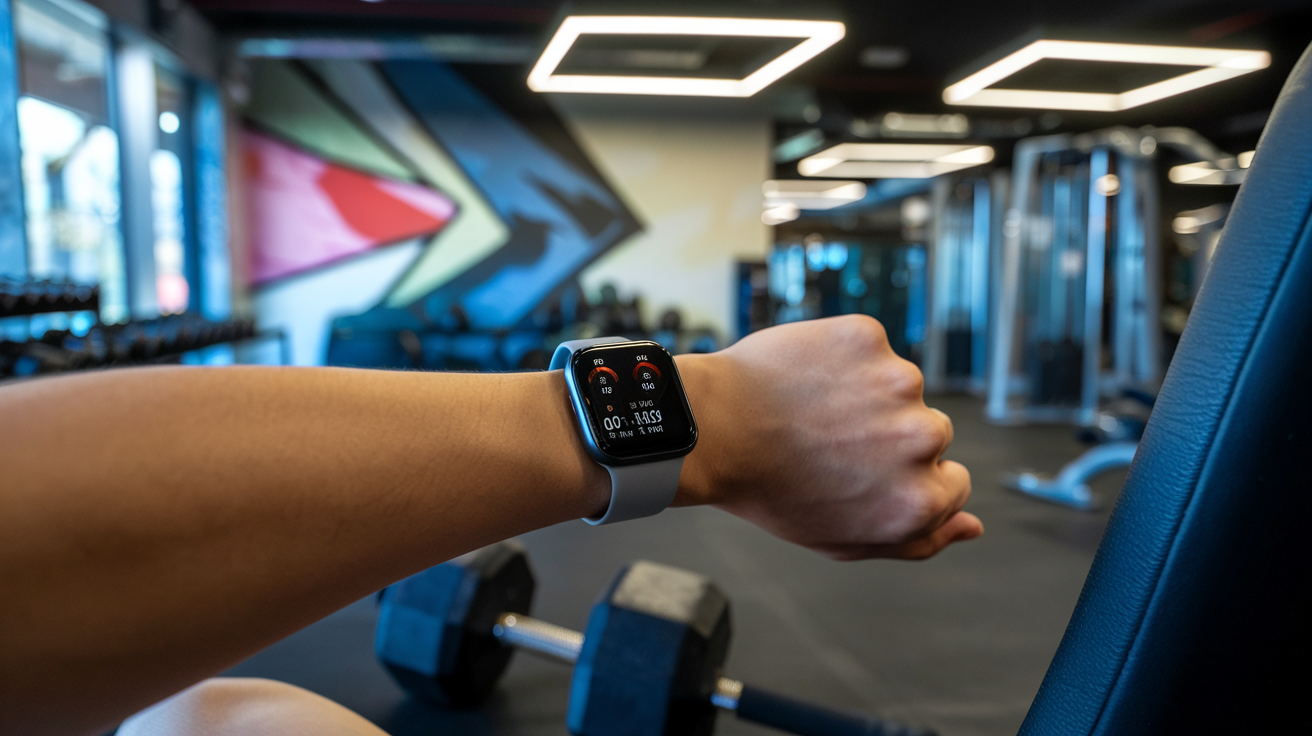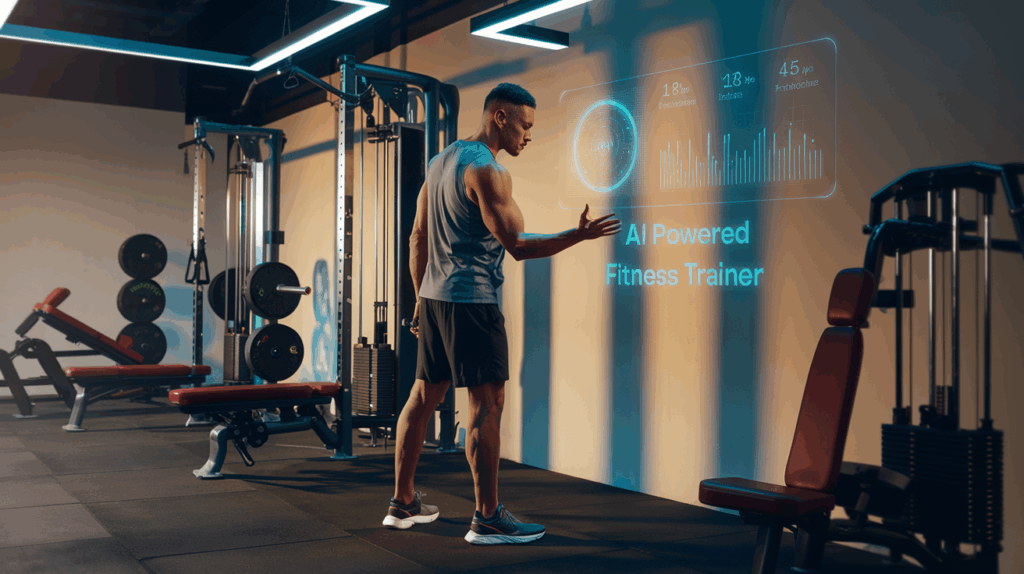Artificial Intelligence in Personal Training
Week 1: A Rough Start
I expected AI personal training to be this magical experience from day one. You know, like those ads where people are smiling while working out? Yeah, that wasn’t me.
My first AI workout session was a disaster. The app kept telling me to do burpees – have you ever tried explaining to an algorithm that your knees don’t bend that way? It couldn’t see my form was off, and I ended up with a sore back that haunted me for three days.
The meal planning feature wasn’t any better. It suggested I eat quinoa and kale smoothies. I live in a small town where finding kale requires a special trip two towns over. Not happening.
The worst part? The motivational messages. “You’re crushing it!” when I was clearly dying on the floor. The disconnect was real.
By Wednesday, I almost deleted the app. The workouts felt generic, the nutrition advice impractical, and the cheerleading hollow. It didn’t know me – my schedule, my kitchen, my hatred of mountain climbers.
But Thursday brought an unexpected turn. The AI started adapting. It noticed I skipped certain exercises and suggested alternatives. When I logged my actual meals (hello, leftover pizza), it adjusted without judgment.
Friday’s workout was surprisingly… doable. Not easy, but possible. The app had begun learning my patterns, my limits, and my reality.
Week 1 wasn’t the fitness revolution I’d imagined, but by Saturday, I realized something important: the AI was trainable too.
Week 1 Takeaways
First Impressions of AI Personal Training
The initial week of working with an AI personal trainer is eye-opening. Unlike a human trainer who might ease you in, AI systems immediately analyze your form, track your movements, and provide instant feedback. No awkward small talk, just pure data-driven guidance.
Most users report a surprising level of personalization right from day one. The AI quickly adapts to your specific movement patterns and limitations, something that might take a human trainer several sessions to fully grasp.
Adjustment Period
Look, there’s definitely a learning curve. Talking to an app or device instead of a person feels weird at first. Some users report feeling self-conscious taking instruction from a digital voice. But by day 3 or 4, that awkwardness typically fades.
The biggest hurdle? Trusting the AI’s judgment. When it suggests dropping your weight or modifying an exercise, your instinct might be to question it. But the data doesn’t lie, and most users find the recommendations spot-on once they give them a chance.
Measurable Progress
This is where AI really shines in week one. You’ll get detailed metrics that human trainers simply can’t provide without specialized equipment:
- Precise movement angles
- Consistency scores across repetitions
- Fatigue indicators before you even feel tired
- Recovery predictions based on heart rate variability
These insights give you tangible evidence of improvement, even when you might not feel it subjectively.
Week 2: The Honeymoon Phase
AI Enthusiasm Kicks In
Week 2 is where the magic starts happening. Your AI personal trainer has gathered enough data about your workout patterns, and now the real personalization begins.
Those generic workouts? Gone. Your AI coach now knows you struggle with lunges but crush those push-ups. It’s adjusting in real-time, just like a human trainer would—except it never gets tired of analyzing your form.
Most users report this is when they start feeling genuinely motivated. The novelty hasn’t worn off yet, and the personalized feedback makes workouts feel specially crafted for you (because, well, they are).
What You’ll Experience
The app starts to predict when you’ll hit plateaus before you do. It might suggest: “Let’s add 5 pounds to your chest press today—your form data shows you’re ready.” That’s not random—it’s calculated based on thousands of data points from your previous sessions.
Your AI trainer is also learning your motivation patterns. Noticed how it sends you encouragement texts right when your energy typically dips mid-workout? That’s not coincidence.
Making the Most of This Phase
Ride this wave of enthusiasm! This is prime time to:
- Test different workout styles while the AI learns your preferences
- Be honest about feedback—tell the AI when suggestions don’t work
- Track your metrics obsessively—the system gets smarter with more data
The honeymoon phase is sweet, but don’t get too comfortable. Week 3 is when the real test begins.
Week 2 Takeaways
What We Learned This Week
Week 2 has been eye-opening for our AI personal training journey. I’m seeing major shifts in how the tech adapts to individual needs.
First off, the AI’s ability to track progress is mind-blowing. It’s not just counting reps anymore – it’s analyzing form in real-time. My squat form improved dramatically after the AI noticed I wasn’t going deep enough. Quick correction, better results.
The personalization is next-level too. The system adjusted my workout when I reported knee discomfort, offering alternatives that worked the same muscle groups without the pain. A human trainer might do this, but the AI does it instantly, without judgment.
Sleep tracking integration was the surprise winner this week. The AI noticed my sleep patterns were affecting recovery and automatically adjusted workout intensity on days following poor sleep. This kind of holistic approach makes the training feel truly customized.
One hiccup: nutrition recommendations still feel generic. The AI suggests standard post-workout meals without considering my specific preferences or dietary restrictions. Room for improvement there.
The accountability factor continues to shine. Those gentle but persistent reminders keep me on track without feeling nagged. Plus, the weekly progress visualizations are genuinely motivating – seeing those small improvements charted over time makes a huge difference mentally.
Bottom line: Week 2 showed me that AI personal training isn’t just a gimmick – it’s evolving into something that might genuinely rival human trainers in some aspects.
Week 3: Losing Steam
The Motivation Slump
Week three is where things get real. That initial excitement? Gone. The novelty has worn off, and now you’re facing the grind. Your AI trainer keeps sending those cheerful notifications, but you’re starting to swipe them away.
You’re not alone. Almost everyone hits this wall around the 21-day mark. Your body’s sore, results seem minimal, and suddenly that couch looks way more appealing than another set of burpees.
Here’s what’s happening: your brain is shifting from the dopamine rush of starting something new to realizing this requires consistent effort. The AI notices your workout times getting shorter or your sessions less frequent. It’s programmed to spot these patterns.
How AI Adapts to Your Slump
Smart AI systems don’t just double down when you’re losing steam. They pivot. The better platforms will:
- Switch up your routine to introduce novelty
- Shorten workouts temporarily to make them more doable
- Celebrate smaller wins to rebuild momentum
- Adjust difficulty levels based on your engagement
Unlike human trainers who might take your cancellations personally, AI systems analyze your behavior patterns objectively. They’re tracking not just what you do, but when and how you do it.
Breaking Through the Wall

The difference between people who quit and those who make fitness a lifestyle often comes down to navigating this exact period. Your AI trainer should be offering you alternative workout styles, sending encouraging (but not annoying) reminders, and maybe even connecting you with community support.
If your AI trainer isn’t helping you through this slump, it might be time to try a different platform. Not all AI systems are created equal when it comes to behavioral psychology.
Week 3 Takeaways
AI’s Impact on Week 3 Training
Week 3 hit different. My AI trainer upped the ante with personalized workouts that actually felt like they were designed for ME. Not some generic program from a dusty fitness magazine.
The coolest part? The AI noticed I was struggling with proper form on squats. Instead of just telling me to “go lower” like human trainers often do, it showed me a side-by-side comparison of my form versus proper technique. Game changer.
My recovery metrics were fascinating too. The AI tracked my sleep patterns and adjusted my Thursday workout when it detected I’d had a rough night. A human trainer would have just stuck to the plan regardless.
Here’s what blew me away:
- The AI sent motivational messages exactly when I needed them, not on some predetermined schedule
- Workout adjustments happened in real-time based on my performance
- Nutrition recommendations shifted when I logged that weekend pizza night
The accountability factor is off the charts. When I skipped Tuesday’s session, the AI didn’t guilt-trip me. Instead, it analyzed my pattern of missed workouts and suggested scheduling them when I’m historically more likely to follow through.
I’m seeing muscle definition I haven’t had in years. The AI’s precise calibration of progressive overload is working better than any human-designed program I’ve tried before.
Is it perfect? No. But it’s learning my body faster than any personal trainer could.
Week 4: Red Flags Wave
The Warning Signs You Can’t Ignore
By week four, I was getting that uneasy feeling. You know the one – when something just doesn’t add up.
My AI trainer started showing some concerning behaviors. For starters, my workout plans became oddly generic. The personalized touch that impressed me initially? Gone. The program wasn’t adapting to my feedback anymore.
One morning, I mentioned some knee pain after yesterday’s squats. The AI completely ignored this crucial information and prescribed… more squats. A human trainer would never do that.
Then there was the nutrition advice. The AI started recommending the same protein shake three times daily – regardless of my schedule or preferences. When I questioned this, the responses became repetitive and robotic.
The final straw? The motivational messages. They started feeling mass-produced rather than tailored to my journey:
“Great job! Keep pushing!”
“You’re doing amazing! Don’t give up!”
“Another day, another opportunity!”
Empty phrases with zero connection to my actual progress.
I also noticed the app started pushing premium features aggressively. Every other message included some upsell about “unlocking my full potential” with the pro version.
That’s when it hit me – I was being treated like a data point, not a person. The initial “getting to know you” phase was just gathering enough information to keep me minimally engaged while maximizing profit.
The human element – genuine understanding, empathy, adaptation – was missing. And in fitness, that’s not just disappointing. It’s potentially dangerous.
Week 4 Takeaways
AI Personal Training: Week 4 Progress
Four weeks in, and wow – the transformation is real. By now, AI training has shifted from novelty to necessity in my fitness journey. The personalization has reached an impressive level of accuracy.
My AI trainer now predicts when I’m about to hit a plateau before I even feel it. This week, it adjusted my routine just as I was getting too comfortable with my weights. How did it know?
The nutrition guidance has become spookily intuitive. Yesterday, my AI suggested increasing protein intake right after I’d been thinking about how hungry I was getting post-workout. The algorithm had detected subtle changes in my recovery patterns that I hadn’t consciously registered.
Sleep quality analysis has been a game-changer. The correlation between my deep sleep cycles and performance gains is crystal clear in the data visualizations. When I got those 7+ hours of quality sleep, my strength numbers jumped noticeably.
One unexpected benefit? The psychological edge. The AI’s emotional intelligence has improved dramatically, offering encouragement during moments of low motivation that feels almost… human.
The progress tracking features now provide predictive modeling that shows where I’ll be in 8 weeks if I maintain current consistency. That visualization alone keeps me showing up daily.
Four weeks in, and I’m lifting 30% more, recovering faster, and actually looking forward to workouts. The AI has learned me better than any human trainer could in such a short time.
The Breakup

When AI and Personal Training Don’t Mix
Breaking up is hard to do, especially when you’ve invested time and money into an AI personal trainer that just isn’t working out. Maybe the workouts feel generic, or the AI doesn’t adjust when your knee acts up. Perhaps you’re just not seeing results.
Here’s the thing about AI personal trainers – they’re amazing technological achievements, but they aren’t human. They can’t see your form struggling in real-time or notice the slight wince on your face when something hurts.
Some relationships are worth saving, but sometimes you need to call it quits. If your AI trainer consistently recommends exercises that cause pain, or if the motivation feels hollow and automated, it might be time to move on.
Signs It’s Time to Break Up With Your AI Trainer
- You’re not progressing despite following the program
- The feedback feels generic and unhelpful
- You need more personalized attention for specific issues
- Your motivation is tanking instead of growing
- You find yourself ignoring the AI’s recommendations
Moving On Gracefully
Don’t ghost your AI system – most platforms offer feedback options. Your input helps improve the technology for future users.
Consider a hybrid approach next time. Many human trainers now use AI tools to enhance their services while providing that irreplaceable human touch. You might find that combination gives you the accountability and personalization you need without losing the convenience of technology.
Remember, this isn’t a failure. It’s just recognizing that sometimes, a human coach understanding your unique journey matters more than algorithms and data points.
Fitness

AI-Powered Fitness Tracking
Gone are the days of simple step counters. AI has completely transformed how we track our fitness progress. The smartwatch on your wrist isn’t just counting steps—it’s analyzing your gait, monitoring sleep patterns, and even detecting when you’re stressed.
These AI systems learn your personal patterns over time. They notice when your heart rate spikes during certain workouts or when your recovery is taking longer than usual. Then they adapt their recommendations specifically for you.
What makes this truly game-changing? The personalization. Your body responds differently to exercise than anyone else’s. AI recognizes this and builds a fitness profile that’s uniquely yours.
Virtual Personal Trainers
Ever wished you could afford a personal trainer who’s available 24/7? AI makes this possible without breaking the bank.
AI trainers watch your form through your phone camera, correcting your squat depth or elbow position during pushups. They adjust workout intensity based on how you’re performing in real-time—not just following a preset program.
The best part? They’re getting smarter every day. Today’s AI trainers can create progressive workout plans that evolve as you get stronger, preventing plateaus and keeping you motivated.
Predictive Health Analysis Artificial Intelligence in Personal Training
This is where AI really shines. By analyzing patterns in your workout data, sleep, and recovery metrics, AI can actually predict potential injuries before they happen.
The journey with AI personal training reveals both promise and limitations. While the initial challenges of Week 1 gave way to the excitement of Week 2’s honeymoon phase, the experience gradually deteriorated through Weeks 3 and 4 as motivation waned and concerning patterns emerged. The inevitable breakup with AI training highlights the fundamental truth that technology, despite its advancements, cannot fully replace the human elements of accountability, personalization, and genuine connection in fitness journeys.
Your fitness path deserves more than algorithmic guidance. Whether you choose to integrate AI as a supplementary tool or opt for traditional human coaching, remember that sustainable fitness success combines technological convenience with authentic human support. The most effective approach likely lies in finding the right balance between innovative AI capabilities and the irreplaceable human touch that truly understands your unique needs and motivations.


